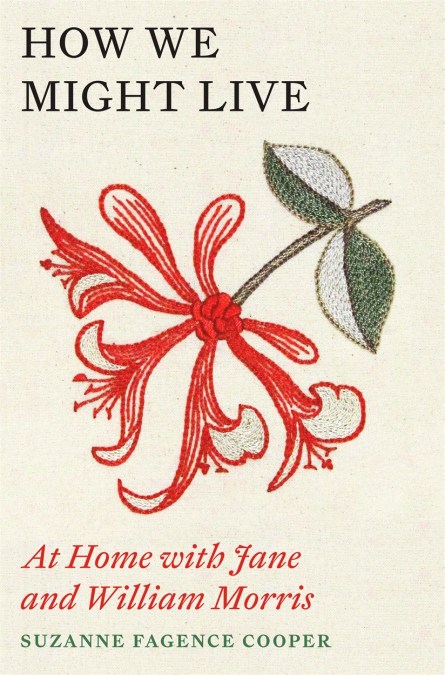William Morris – poet, designer, campaigner, hero of the Arts & Crafts movement – was a giant of the Victorian age, and his beautiful creations and provocative philosophies are still with us today: but his wife Jane is too often relegated to a footnote, an artist’s model given no history or personality of her own.
In truth, Jane and William’s personal and creative partnership was the central collaboration of both their lives. The homes they made together – the Red House, Kelmscott Manor and their houses in London – were works of art in themselves, and the great labour of their lives was life itself: through their houses and the objects they filled them with, they explored how we all might live a life more focused on beauty and fulfilment.
In How We Might Live, Suzanne Fagence Cooper explores the lives and legacies of Jane and William Morris, finally giving Jane’s work the attention it deserves and taking us inside two lives of unparalleled creative artistry.
In truth, Jane and William’s personal and creative partnership was the central collaboration of both their lives. The homes they made together – the Red House, Kelmscott Manor and their houses in London – were works of art in themselves, and the great labour of their lives was life itself: through their houses and the objects they filled them with, they explored how we all might live a life more focused on beauty and fulfilment.
In How We Might Live, Suzanne Fagence Cooper explores the lives and legacies of Jane and William Morris, finally giving Jane’s work the attention it deserves and taking us inside two lives of unparalleled creative artistry.
Newsletter Signup
By clicking ‘Sign Up,’ I acknowledge that I have read and agree to Hachette Book Group’s Privacy Policy and Terms of Use
Reviews
Lyrical...enjoyable
Jane is fortunate in her biographer
Well researched and extensive
Fascinating
[Cooper] traces the Morrises' shared and separate lives with clarity and judicious assessment
Fagence Cooper succeeds, against the odds, in restoring some reality to our view of Jane Morris, giving a proper sense of a woman with striking gifts and talents identifiably her own
Delightful, accessible and insightful
Jane Morris's creative influence on her husband's design empire has finally been revealed in a new book [...] the first joint biography of the couple will shine a light on their personal and creative partnership, and reassert the rightful place of Jane Morris - a skilled embroiderer and talented designer - in the history books.

